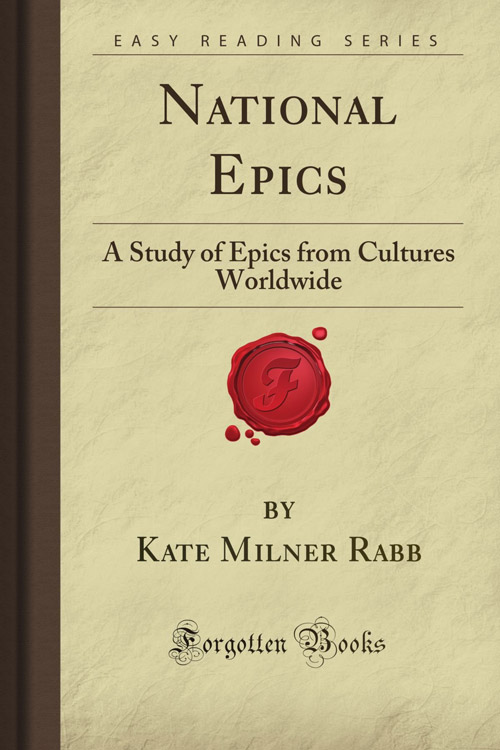
National Epics
At the time when Ravana’s outrages were spreading terror throughout the land, and Brahma, looking down from his throne, shuddered to see the monster he had gifted with such fell power, there reigned in Ayodhya, now the city of Oude, a good and wise raja, Dasaratha, who had reigned over the splendid city for nine thousand years without once growing weary. He had but one grief—that he was childless—and at the story’s opening, he was preparing to make the great sacrifice, Asva-media, to appease the gods, that they might give him a son.
The gods, well pleased, bore his request to Brahma in person and incidentally preferred a request that he provide some means of destroying the monster Ravana that was working such woe among their priests and disturbing their sacrifices. Brahma granted the first request and, cudgelling his brains for a device to destroy Ravana, bethought himself that while he had promised that neither gods, genii, nor demons should slay him, he had said nothing of man. He accordingly led the appealing gods to Vishnu, who proclaimed that men and monkeys should kill the monster and that he would be re-incarnated as Dasaratha’s eldest son and, in this form, compass the death of Ravana.
Over time, as a reward for his performance of the great sacrifice, four sons were born to Dasaratha, Rama by Kausalya, his oldest wife, Bharata, whose mother was Kaikeyi, and twin sons, Lakshmana and Satrughna, whose mother was Sumitra. Rama, the incarnation of Vishnu, destined to destroy Ravana, grew daily in grace, beauty, and strength. When he was but sixteen years old, having been sent for by a sage to kill the demons who were disturbing the forest hermits in their religious rites, he departed unattended, save by his brother Lakshmana and a guide, into the pathless forests, where he successfully overcame the terrible Rakshasa, Tarika, and conveyed her body to the grateful sage.
While journeying through the woods, destroying countless Rakshasas, he chanced to pass near the kingdom of Mithila. He heard that its king, Janaka, had offered his peerless daughter, Sita, in marriage to the man who could bend the mighty bow of Siva the destroyer, which had been kept at Janaka’s court since its owner’s death.
Read or download Book
Kate Milner Rabb
Born Aug. 9, 1866-July 3, 1937, in Rockport, Indiana, Kate Milner attended Rockport High School and received a B.A. and M.A. from Indiana University in 1886 and 1888, respectively.
Biography.
She taught at Rockport High School after college and married in 1891. She was always interested in writing and submitted articles to the Rockport paper while still in college. She published National Epics in 1896, translated The Boer Boys in 1900, and edited The Wit And Humor Of America in 1907. She served as editor of Indiana Woman, a weekly Indianapolis newspaper from 1897 to 1898. She also wrote for Atlantic Monthly, Delineator, St. Nicholas, and Youth’s Companion.
Rabb’s interest in history began when she wrote the 1916 centennial pageant for Spencer County, Indiana. Following her husband’s death in 1918, she started a weekly column in the INDIANAPOLIS STAR featuring the adventures of John Parsons, a fictional character based on her research. She published the series in 1920 as A Tour Through Indiana In 1840. She then wrote a thrice-weekly column entitled “The Old Town” that featured the history of Indianapolis. Her most popular column, “The Hoosier Listening Post,” ran daily from July 20, 1920, until her death and featured local, state, and regional history.
During this period, she co-edited, with WILLIAM HERSCHELL, An Account Of Indianapolis And Marion County (1924). In 1928, she edited Indiana Coverlets And Coverlet Weavers. She was appointed to the Indiana Historical Commission in 1924 and served for one year. Rabb was also a member of the INDIANA HISTORICAL SOCIETY, Phi Beta Kappa, Women’s Press Club of Indiana (which she served as president from 1929-1930), the CONTEMPORARY CLUB, and the Players Club, which she and her husband organized.






